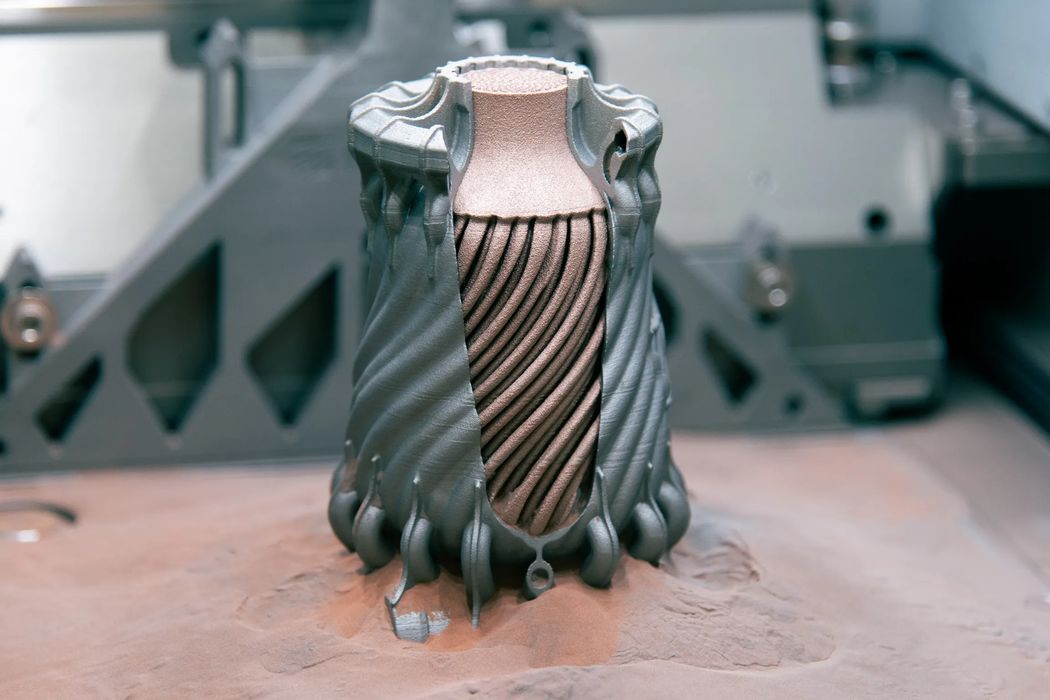
LEAP71 announced a deal with The Exploration Company, but what’s this all about?
You have no doubt not heard of LEAP71, as they are a very new company in the 3D space. There’s bit of a story about how they came to be.
Readers may recall the company Hyperganic, a German startup from a couple of years ago. That company developed new software that could perform what was called “algorithmic engineering”. Basically advanced computational algorithms were used to create incredibly complex shapes that could be 3D printed.
One of their products was the astoundingly complex designs, an aerospike rocket engine. At the time we termed it as possibly the most complex 3D print ever undertaken.
Later I was able to see this print in person, and as billed it was astonishingly complex. So much so that we decided to make the print our Design of the Week in May of last year.
But time changes everything.
Evidently there was a corporate shakeup of some form at Hypersonic, and the original founders departed. One of them, Josefine Lissner, founded a new company, LEAP71, based in Dubai.
LEAP71 produces software that performs similar magic. They explain:
“We create computer code that generates the design for physical parts. The result is an algorithmic model for an entire class of objects. Computational Engineering allows you to iterate faster and customize your product to specific use cases.”
It’s quite an interesting approach, where any created objects become part of a growing code base for further developments. The basic steps of the process are:
- Identify fundamental components and the dependencies between them
- Provide constraints and parameters about how the components work together
- Iterate code building to converge on a sufficiently sophisticated output
They say the result of this process is “a computational model of the design process” for a type of object. This can then be executed with differing inputs to quickly generate a variety of geometries.
Browsing through their website shows a series of incredibly intricate designs, all apparently produced by their software and process. These can be used for a variety of high-end industrial applications, including aerospace and others.
The latest news from the company is that they’ve signed a deal with The Exploration Company to assist in the development of a computational model for generating rocket engines. The intention is to use the future engine in the company’s orbital Nyx module.
The Exploration Company’s CEO Hélène Huby explained:
“One of the challenges for reducing the cost of space exploration is the conventional approach to engineering. Complex parts like rocket engines are hard to design, and each iteration can sometimes take a significant amount of manual rework with traditional CAD-based tools. Using computational models, we want to engineer faster, so that we can print and test faster – hence accelerating the improvement and validation of our engines.”
Computational engineering is a new approach to part design enabled by the recent capabilities of software and hardware. It is not yet widely used, but given its capabilities and the needs of industry, it’s likely this approach will become popular in the future.
Via LEAP71
منبع: https://www.fabbaloo.com/news/leap71-exploring-computational-engineering-in-the-3d-space
